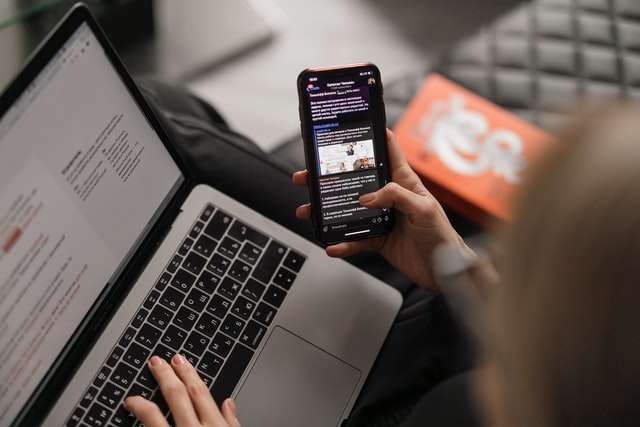How to Write Follow-Up Emails?
Follow-up emails are one of the most important types of emails that you can send. They show that you’re interested in continuing the conversation, and they give you another chance to sell your product or service.
Unfortunately, or fortunately, depending on where you’re standing, a recent study by Scripted shows that 44% of salespeople give up after one follow-up attempt.
This means that if you are sending follow-up emails, you’re already ahead of the curve. But it also means that there’s a lot of room for improvement.
In this article, we’re going to cover the basics of follow-up emails and show you how to write them so that they actually get results.

What is a follow-up email?
A follow-up email is an email that you send to a prospect or customer after they have taken some sort of action, any action.
This could be something like requesting more information, downloading a piece of content, or attending a webinar.
The goal of a follow-up email is to continue the conversation and build the relationship. It’s also an opportunity to sell your product or service.
Why do you need to write a follow-up email?
There are several reasons why you need a follow-up email, and we’ll cover a few of them here:
- Build a relationship with your prospect or customer: By sending a follow-up email, you’re showing that you’re interested in continuing the conversation.
- Sell your product or service: A follow-up email gives you another chance to sell your product or service.
- Get feedback: A follow-up email is a great way to get feedback from your customers or prospects.
- Generate referrals: If you have a satisfied customer, a follow-up email is a great way to generate referrals.
- Get more information on your leads: A follow-up email can help you get additional information on your leads such as their budget or timeline.
Follow-up emails are one of the most important types of emails to send because they show that you care about your customers and prospects.
When to send a follow-up email?
Now that we’ve covered what a follow-up email is and why you need to write one, let’s talk about when you should send a follow-up email.
The short answer is any time someone takes any sort of action. This could be something like requesting more information, downloading a piece of content, or attending a webinar.
The goal of a follow-up email is to continue the conversation and build the relationship. It’s also an opportunity to sell your product or service.
But if you want to get technical about it -and we do- there are more important times than others when it comes to sending a follow-up email:
- After a meeting: This is your chance to recap the meeting, answer any questions they might have, and continue the conversation.
- After sending information: Make sure they received the information you sent and answer any questions they might have.
- After an event: You should always follow up with the people you met in an event, whether you’re the host or not. This is a great way to build your network.
When should you NOT send a follow-up email?
That said, there are also times when you should steer away from following up with your prospects. These are typically called “ghosting” emails and can actually do more harm than good to your relationship.
- After sending a cold email
- If you don’t have anything new to say
- When you’re just checking in
- If you’re emailing too frequently
- When you’re emailing too early
- If you’re emailing too late
These are just a few of the times when you should NOT send a follow-up email. If you’re unsure whether or not you should send one, err on the side of caution and don’t send it.
Best practices to write the perfect follow-up email
Having covered what a follow-up email is, why and when you should send one, it’s time to talk about how to write the perfect follow-up email.
Here are a few tips:
- Keep it short and sweet: A follow-up email should be clear, concise, and coherent. It should get to the point quickly and not be overly long.
- Use a friendly tone: A follow-up email is not the time to be pushy or sales-y. Instead, use a friendly and conversational tone.
- Use the right subject line: The subject line of your follow-up email is just as important as the email itself. Make sure it’s catchy and to the point.
- Include a call-to-action: A follow-up email should have a clear call-to-action, whether that’s scheduling a meeting, signing up for a free trial, or something else.
- Proofread your email: Always proofread your email before sending it. This includes checking for grammar and spelling errors.
With these tips in mind, you’re well on your way to writing the perfect follow-up email.
Follow-up email automation
Now that you know everything there is to know about follow-up emails, it’s time to grasp how to automate your follow-up emails.
Lead nurturing is the process of building relationships with your leads until they’re ready to buy. And one of the best ways to nurture your leads is with automated follow-up emails.
With automation, you can send a series of emails to your leads over a period of time. This is different from a drip campaign, which is a series of emails sent to contacts all at once.
The best way to do this is to use a tool like LaGrowthMachine. With this tool, you can easily create and automate your follow-up emails. What’s more, it integrates with your existing CRM so you can easily track your leads and customers.
Follow up with your prospects like a boss!
So there you have it! Our guide to follow-up emails.
Following up with your customers and prospects is a great way to build relationships and sell your product or service. But it’s not always easy to know when and how to do so.
With this guide, you’ll be able to confidently follow up with your prospects, build relationships, and close more deals.
Follow these tips and you’ll be on your way to becoming a follow-up pro in no time!
Happy emailing!




